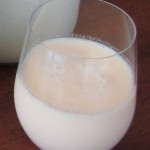A CDC study carefully selects data and criteria to support anti-raw milk position
 “Majority of dairy-related disease outbreaks linked to raw milk” is the title of a press release from the CDC about a new study just published in the journal Emerging infectious Diseases. At first the data makes it look really bad for raw milk. The subtitle of the press release is “CDC Report Shows Higher Rates of ‘Raw’ Milk Outbreaks in States Where It’s Legal.” I was immediately skeptical of these claims because they just didn’t agree with the substantial research done by Dr. Ted Beals showing the safety of drinking raw milk. My personal experience with raw milk sure doesn’t support the report’s conclusions.
“Majority of dairy-related disease outbreaks linked to raw milk” is the title of a press release from the CDC about a new study just published in the journal Emerging infectious Diseases. At first the data makes it look really bad for raw milk. The subtitle of the press release is “CDC Report Shows Higher Rates of ‘Raw’ Milk Outbreaks in States Where It’s Legal.” I was immediately skeptical of these claims because they just didn’t agree with the substantial research done by Dr. Ted Beals showing the safety of drinking raw milk. My personal experience with raw milk sure doesn’t support the report’s conclusions.
I was glad to see the critique issued by the Weston A. Price Foundation, which strongly supports the safety and health benefits of drinking raw milk. Their response is titled “CDC Cherry Picks Data to Make Case Against Raw Milk.” Please read all of both press releases to get the whole story about how the data was manipulated to reach the CDC’s necessary anti-raw milk position, but I do want to highlight a couple of things the WAPF uncovered about how the CDC carefully selected–‘cherry-picked’–its data to support their position.
First: The specific years analyzed in the study, 1993 to 2006, conveniently stopped just before there were significant outbreaks from pasteurized milk in 2007: 135 people became ill, and three people died from pasteurized milk contaminated with Listeria. Yes, three people died from pasteurized milk. Also, the years just before the study began analyzing data, the 1980’s, were particularly bad for pasteurized milk. For example, in 1985 “there were over 16,000 confirmed cases of Salmonella infection that were traced back to pasteurized milk from a single dairy.” Estimates of the total number of illness involved in that outbreak were over 168,000, “the largest outbreak of salmonellosis ever identified in the United States” at that time. The study authors chose their time period well, didn’t they? The same kind of data were available for the years omitted just like those included in the study, but the omitted years weren’t as favorable to pasteurized milk.
Also, I found it especially significant that the analysts chose to compare data based on number of “outbreaks” not number of “illnesses.” Since an “‘outbreak’ of foodborne illness can consist of two people with minor stomachaches to thousands of people with bloody diarrhea” the study’s choice of comparing ‘outbreaks’ distorts the seriousness of the illnesses by giving the same weight to all ‘outbreaks.’ A comparison based on the number of illnesses would have provided a more accurate picture. Judith McGeary well counters the study’s conclusion that there more ‘outbreaks’ in states where raw milk is legal than in states where it’s illegal. She says, “had the authors looked at actual risk of illness, instead of the artificially defined “outbreaks,” there would have been no significant results to report.” It’s fairly clear why they chose to use ‘outbreaks.’
Others have also noted that the timing of this press release was suspiciously close to the Harvard Raw Milk Debate just a few days before, and the subtitle is not very subtle while several states are currently considering bills that would allow the legal sale of raw milk.

Pingback:No food freedom in Texas! Texas raw milk farmer’s license suspended for delivering milk! | Real Food Houston
Pingback:Is Drinking Raw Milk Like Playing Russian Roulette? | Real Food Houston